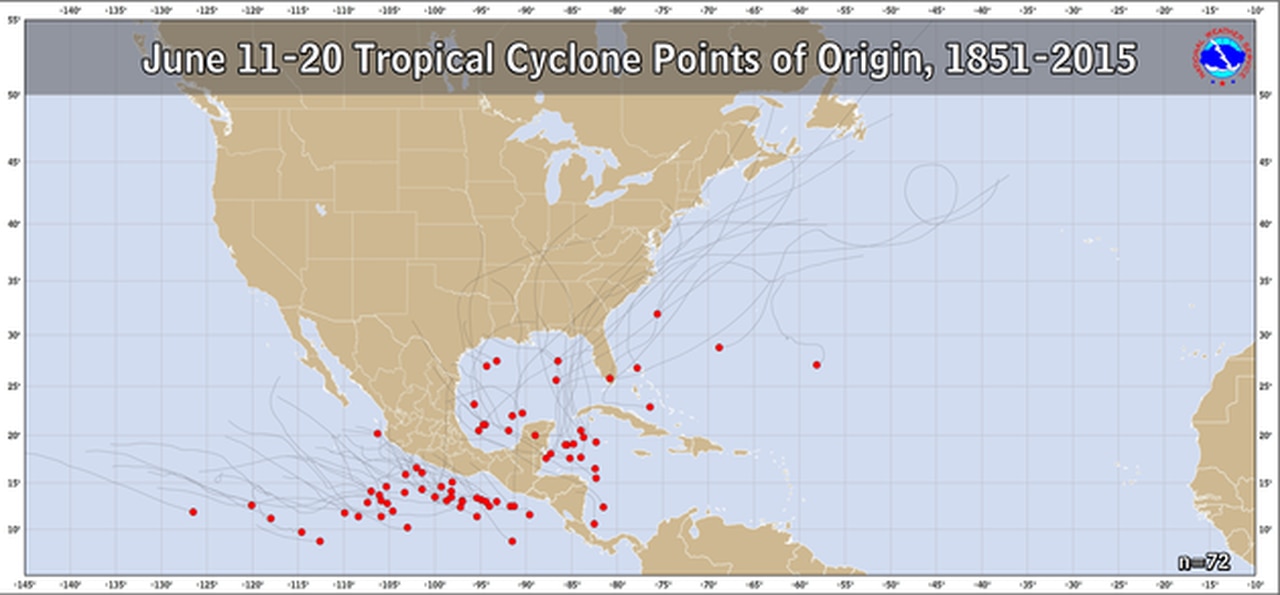Hurricane season 2023: Forecasters watch east Atlantic
Tropical weather watchers will have something to monitor in the Atlantic for the next week or so.
The National Hurricane Center is tracking a tropical wave that is expected to move off the west coast of Africa and into the eastern Atlantic Ocean today into Friday.
Conditions in the area are favorable for it develop, gradually, while it tracks to the west or west-northwest at 15 to 20 mph.
It will be in the central tropical Atlantic — still far from land — by the middle of next week.
The hurricane center gave the system a 20 percent chance of becoming a tropical depression or tropical storm in the next week.
This disturbance is worth watching just because systems don’t typically develop this far to the east so early in the Atlantic hurricane season.
The hurricane center said the most likely area for storms to develop in mid-June is in the Caribbean and Gulf of Mexico. No storm (at least on record) has developed in the eastern Atlantic in that timeframe:
Here’s where tropical systems have developed in the past in the June 11-20 timeframe.
There has already been one named storm — and one unnamed storm — in 2023.
The unnamed storm was a subtropical system that developed off the coast of the Northeast U.S. in January. It never affected land.
The first named storm of 2023 was Tropical Storm Arlene. Arlene became a tropical depression in the Gulf on the first day of the hurricane season, June 1, and became a tropical storm on June 2. It brought some heavy rain to parts of Florida but never moved onshore, dissipating in the southeastern Gulf on June 3.
Forecasters think a near-average hurricane season is in the cards for the Atlantic.
NOAA’s outlook suggests there could be 12-17 named storms (that includes tropical storms and hurricanes), five to nine hurricanes and one to four major hurricanes (Category 3 or stronger storms).
According to NOAA an average season in the Atlantic basin has 14 named storms, seven hurricanes and three major hurricanes.

NOAA forecasters are calling for a near-normal hurricane season in the Atlantic in 2023. The hurricane season officially started June 1 and lasts through Nov. 30.NOAA
